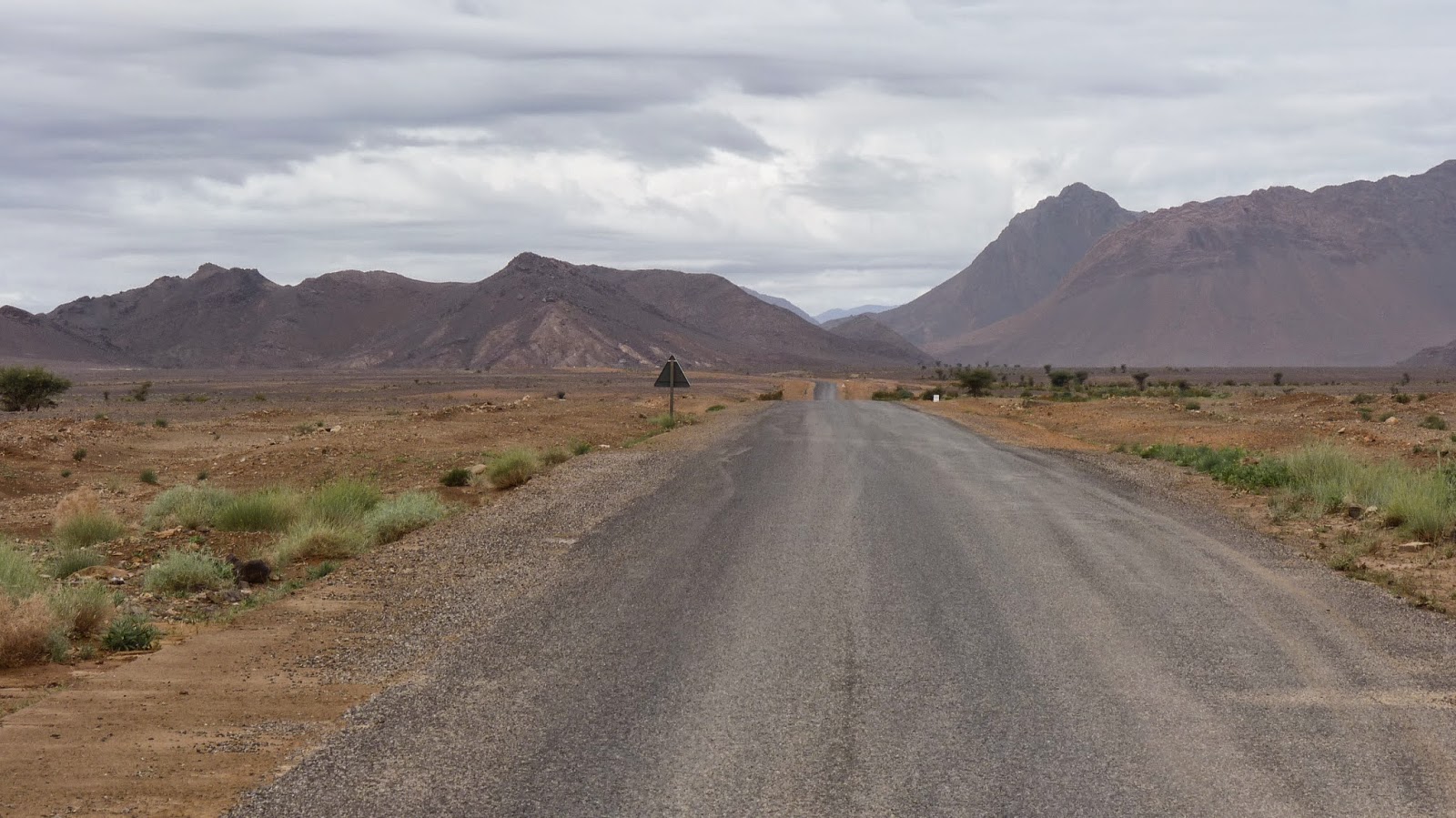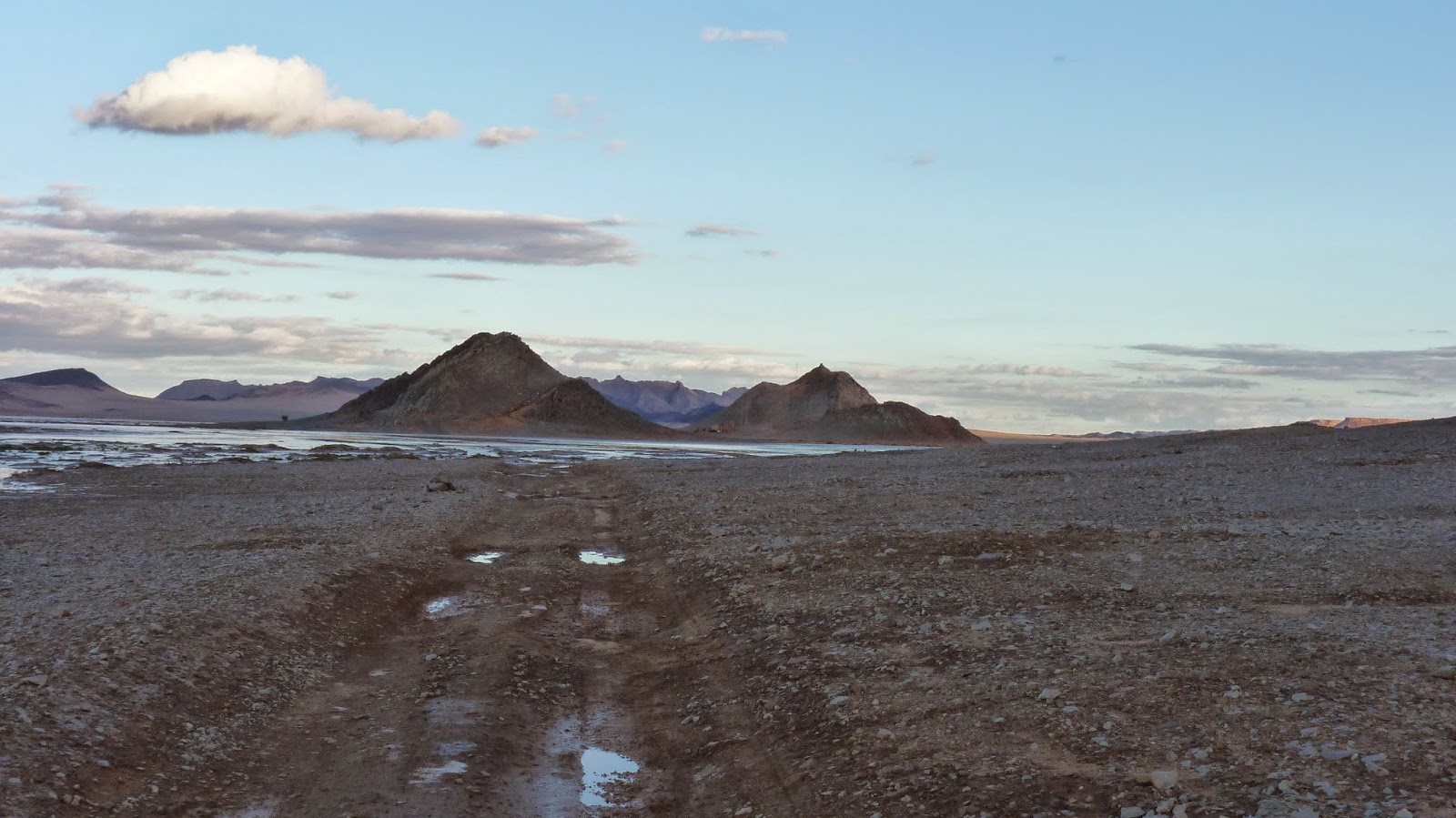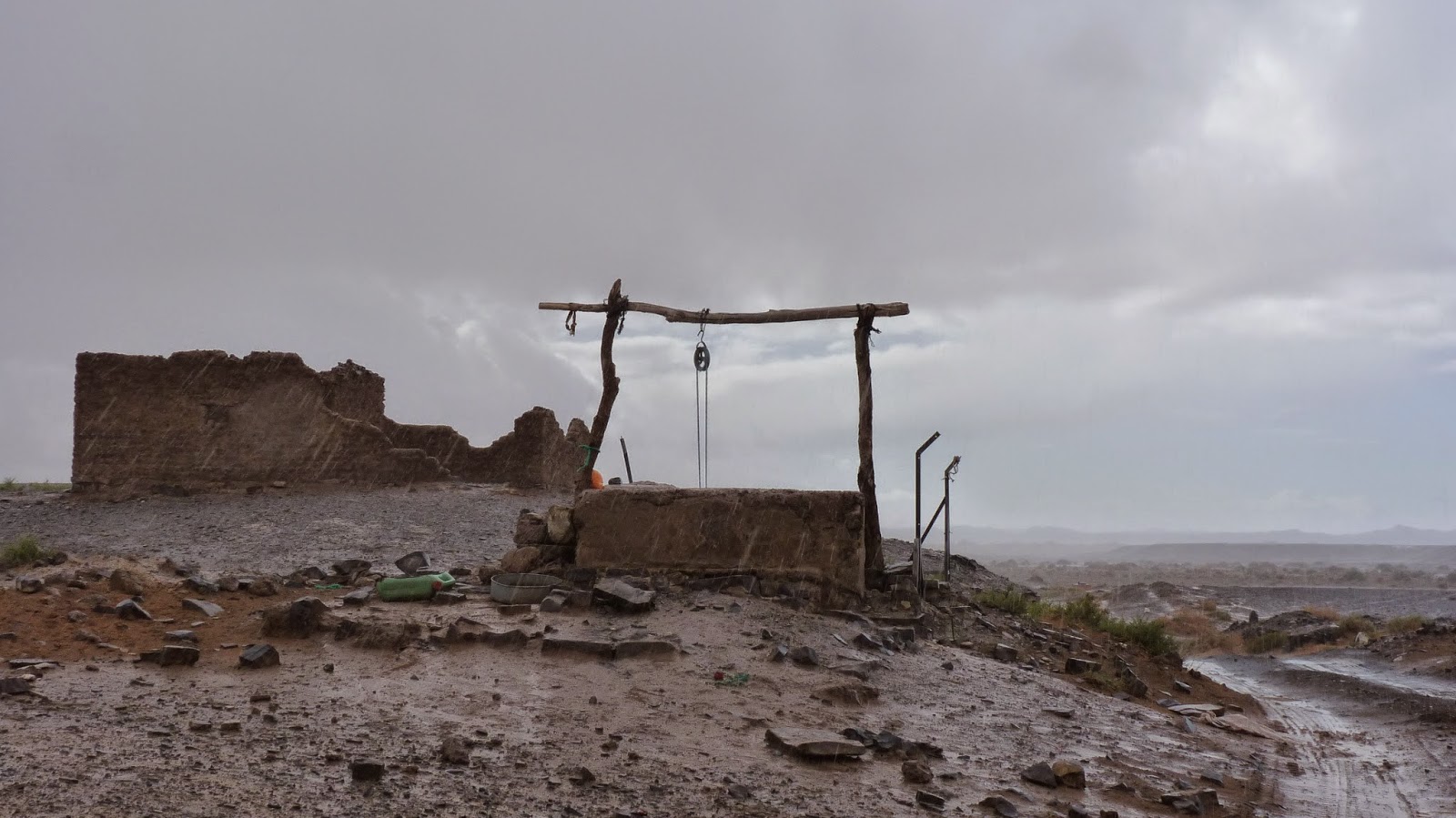There was a small queue of traffic waiting for the water to drop and initially the policeman said we could not cross, though after inspecting our car he decided that we could. The water didn't really look that high, but given the policeman's cautiousness I decided it was better to wait for someone else to go across first. Soon enough two Toyota Landcruisers crossed with ease, giving me the confidence to go across too. It turned out not to be difficult.
But getting past the ford didn't ultimately help us very much, because upon reaching the small village of Taouz we needed to cross the oued (means river in Arabic) Ziz and that proved impossible. A local man named Mohammed approached and told us the route was closed. Still we wanted to see the river for ourselves and so he took us to it, riding ahead of us on his motorbike. It was difficult enough just trying to drive to the river let alone actually cross it. The ground was a sodden mess, as it would all have been beneath the flood waters just days earlier. And although the Ziz had receded back within its river banks, it was still a high wall of brown muddy water. Mohammed invited us back to his house for tea and to show me his Michelin map. I knew to be aware some sort of sales pitch would likely be involved, but I was nonetheless keen to accept his offer and see his house.
Approaching the village near Taouz where Mohammed's house is.
Mohammed served us tea in the traditional Moroccan way and fed us home made bread with left over tagine. The photo below shows his living room, which apart from the wool rugs on the couch and a small table is unfurnished and undecorated. The floor is concrete. I suspect Mohammed's house is a good example of what other houses are like in the small villages we pass through.
Mohammed has only lived in a house for the last ten years. Before that he was a nomad and lived in tents in the desert. His background makes him an ideal candidate for his current line of work, which is working as a guide to people looking to cross the desert - just like us. And of course this is the main reason we were invited back for tea. As we examined Mohammed's Michelin map he was helpful in giving us ideas, including when the river might drop low enough to cross, or indeed how to get around it. We discussed some ideas as to how he might guide us, riding his motorbike ahead of us. But in the end I preferred to go it alone, taking a route that would avoid having to cross the Ziz - or the even bigger river beyond that with a river basin 5km wide!
This ended up being another day that we failed to access the Sahara, but not a day wasted, as being taken into the home of a local was very interesting. We pass through villages filled with simple housing almost daily, but the opportunity to go inside one was very much appreciated. We returned to Merzouga for the night and I got busy plotting a new route into the Sahara that we would follow the next morning.
Next Day
The following morning we were on the road reasonably early, hopeful that my new route into the Sahara (our 4th attempt!) would prove successful. The new plan was to return back down the paved road in the direction of Zagora far enough to get across the biggest rivers, then turn south and head into the desert.
After turning south we followed a dirt road towards the desert and passed through a number of remote villages along the way. Many of the villages were recovering from the flooding and still busy clearing up fords and bridges.
Eventually we turned off the dirt road and began to follow a track further into the desert.
Stopping for lunch.
Old ruined kasbahs such as the one shown below are not uncommon. We went over for a closer look at this one.
The photos that follow speak for themselves. Basically the further south we went towards the Sahara the more remote and isolated it became.
At least there's one tree out here if shade is needed!
Getting near the desert town of Oum Jrane.
Approaching Oum Jrane.
Pausing safely outside of Oum Jrane, out of the reach of dozens of over excited children! After studying the maps it turned out we needed to go back through Oum Jrane again.....
Now on the other side of Oum Jrane and back on our route.
You are very reliant on GPS out here. The tyre marks go off whichever direction, sometimes aligning to our route and sometimes not. Without GPS it would be easy to get lost or confused out here. But on the plus side you don't even need a track to follow. The tyre marks give some comfort that you're following an established route, but wherever the tyre marks stopped aligning with our intended route I could just veer overland across the plains until we found other tyre marks that aligned with GPS waypoints I had plotted.
This lake is nearly always a dry lake bed. But with all the heavy rains and flooding in Morocco this lake had unusually filled up. We planned to visit a desert town on the far side of this lake bed and my books indicate that ordinarily you can just zip across the dry lake bed, but not now. Getting to the town would have meant a long drive around the lake so we gave it a miss. Part 2 of this blog has photos of the town from across the lake.
I took the photo below from a sandy/rocky outcrop near our campsite. On the far side of the mountains visible in the photo lies the border with Algeria. Although some tourists have been put off coming to Morocco owing to extremists across the border in Algeria and beyond, I felt at all times safe in Morocco. Despite the remoteness of our camping spot, I knew we were not far from a Moroccan army checkpoint because we drove into it by mistake and were turned around by armed soldiers.
See Part Two for the remainder of this route.





























































































